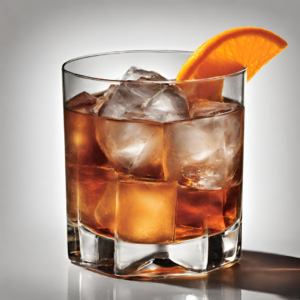
Last Monday members of United States Bartenders’ Guild (USBG) New York and New Jersey chapters were invited to a special tasting. It was an opportunity to learn directly from David Blackmore – Whisky Ambassador Team Lead & Global Brand Ambassador, Ardbeg and Glenmorangie and the newly appointed Keeper of the Quaich board member.
The event also featured speacial guest co-presenter Eric McGriff of OutSmart NYC, an initiative that equips hospitality teams with bystander tools to create safer nights out for their guests. Eric is a nationally recognized advocate and prevention educator, a former UN Women Spokesperson, and a Global Peace Ambassador.
The event offered the ins and outs of four core tastings from Ardbeg and Glenmorangie, two extremely different distilleries sitting under one ownership in Moet Hennessy. They say siblings grow up as 180 degrees of one another and Ardbeg and Glenmorangie are just that: one is of the darkest, heaviest, smokiest material, a rebel with an edge, and the other is an approachable, friendly, sweet one. One is reserved for a cult of loyal followers, the other is an accessible drink that can appeal to all whisky drinkers.
The session was provided as part of the MH Whisky School which works closely with the Edinburgh Whiskey Academy and was accompanied by a presentation from OutSmart, a non profit with a goal to keep bars and clubs safe for all.
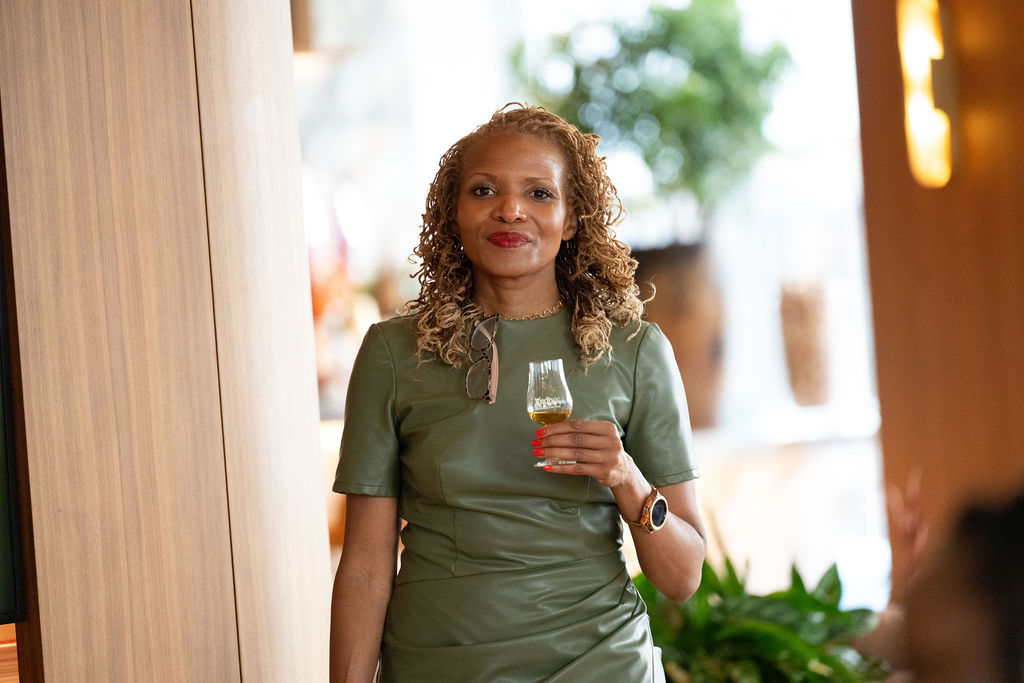
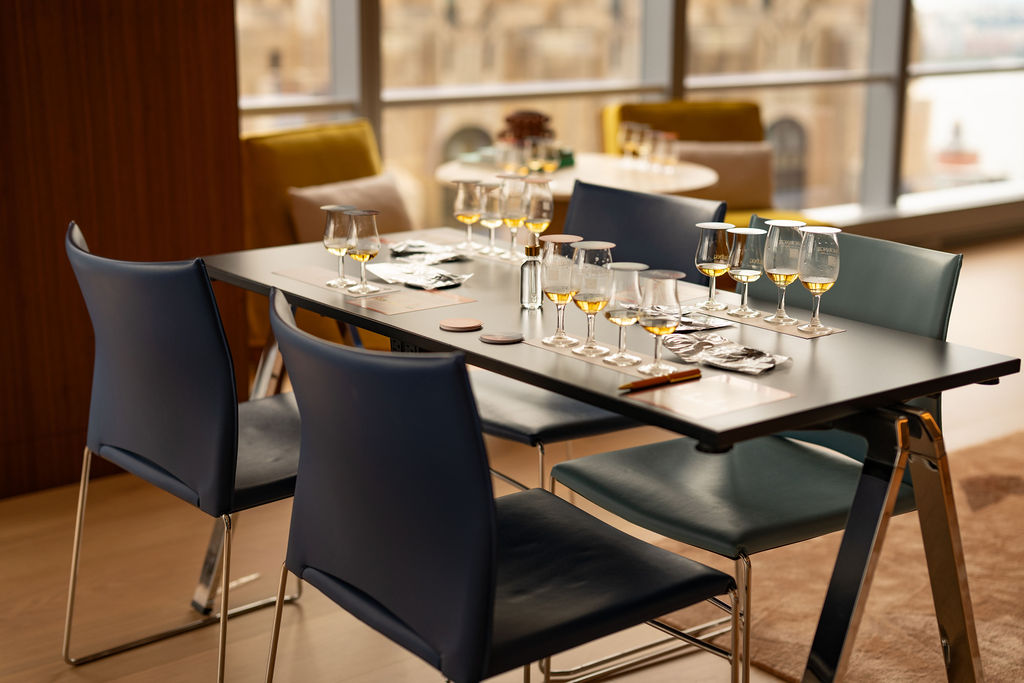
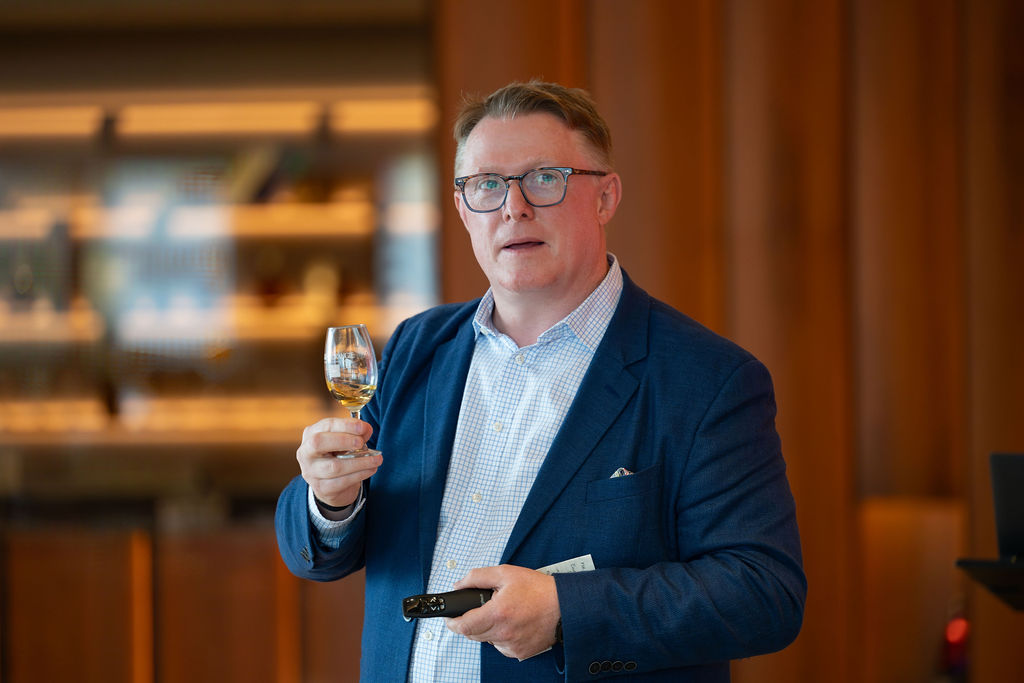
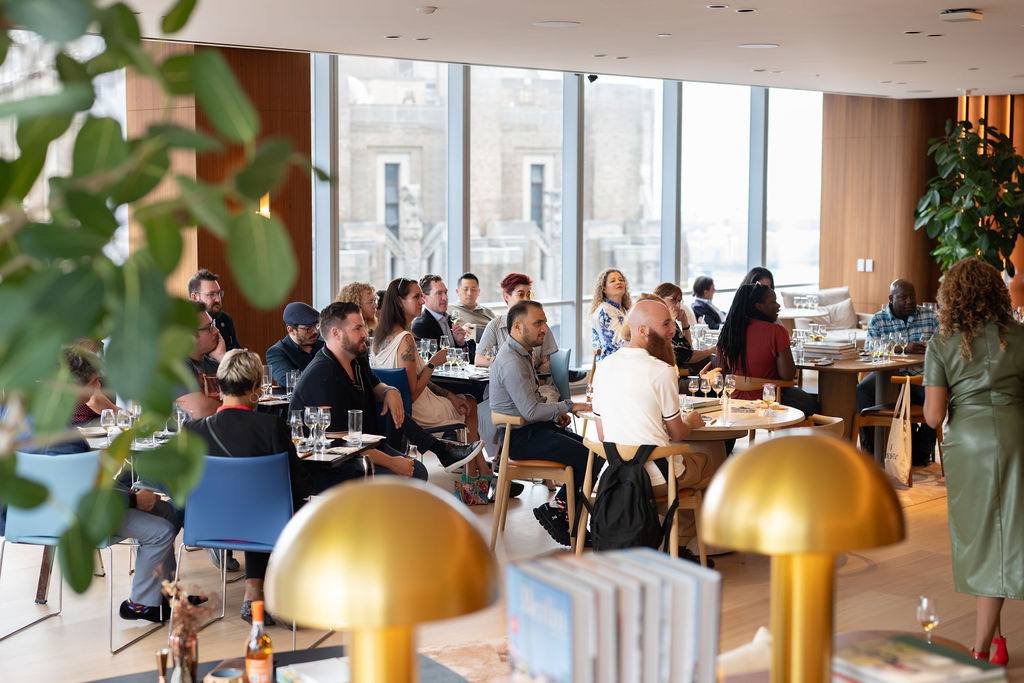
We gathered in one of the most breathtaking spaces, the LVMH offices watching over downtown NYC. (LVHM is the company that came from the merger of Moet Henneey and Louis Vuitton.)
We got to hear first hand from Mr. Blackmore fun trivia facts and stories behind the distilleries and most popular expressions from the two brands. Behind the two brands are Dr Bill Lumsden, Head of Distilling and Whisky in Glenmorangie and Ardbeg, and the very charismatic Master Blender Gillian Macdonald whom I had the honor of interviewing a couple of months ago. The event was orchestrated and presented and led by Ardbeg & Glenmorangie’s Brand Ambassador Lisa Pope, one of the most prominent and knowledgeable Ambassadors out there. Lisa comes with a strong background in wine and was sharing her experience of the two distilleries and production processes. Her notes gave an extra layer of knowledge to the event.
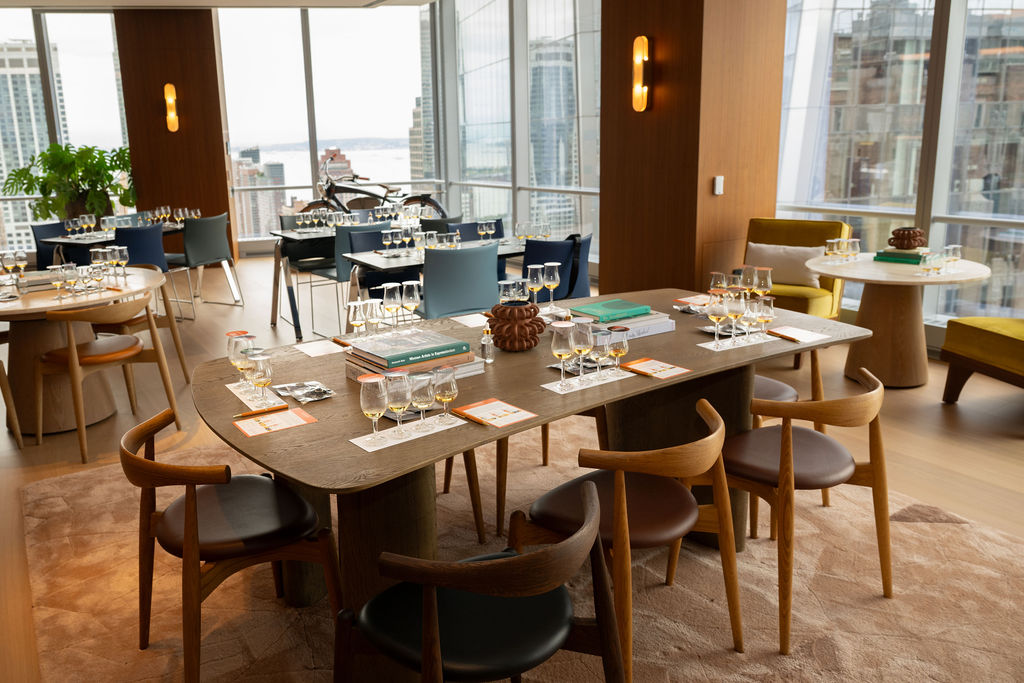
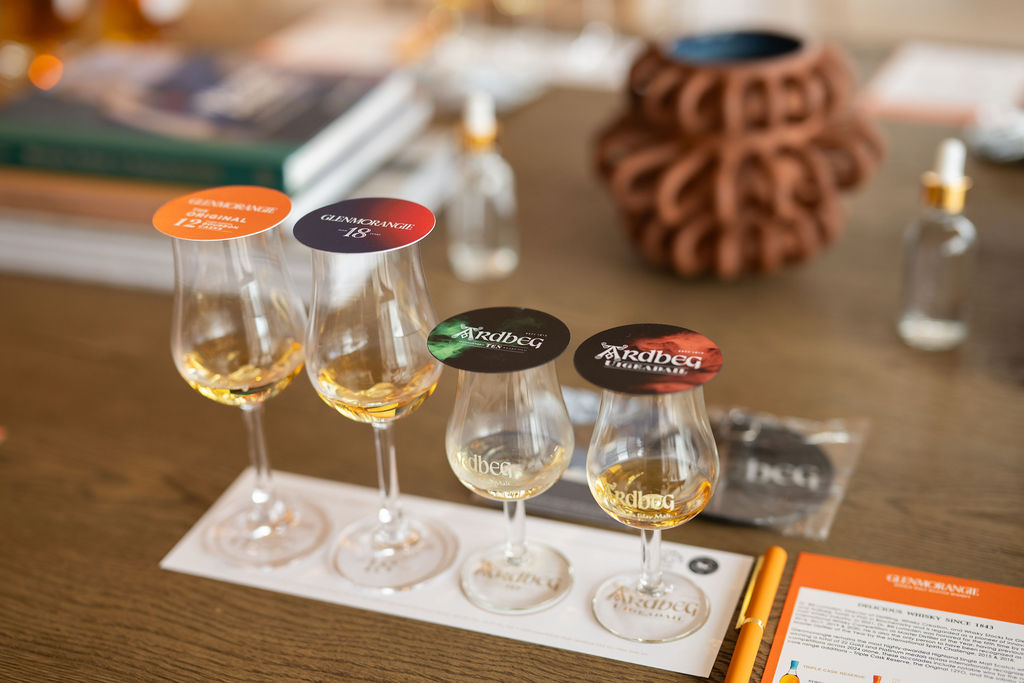
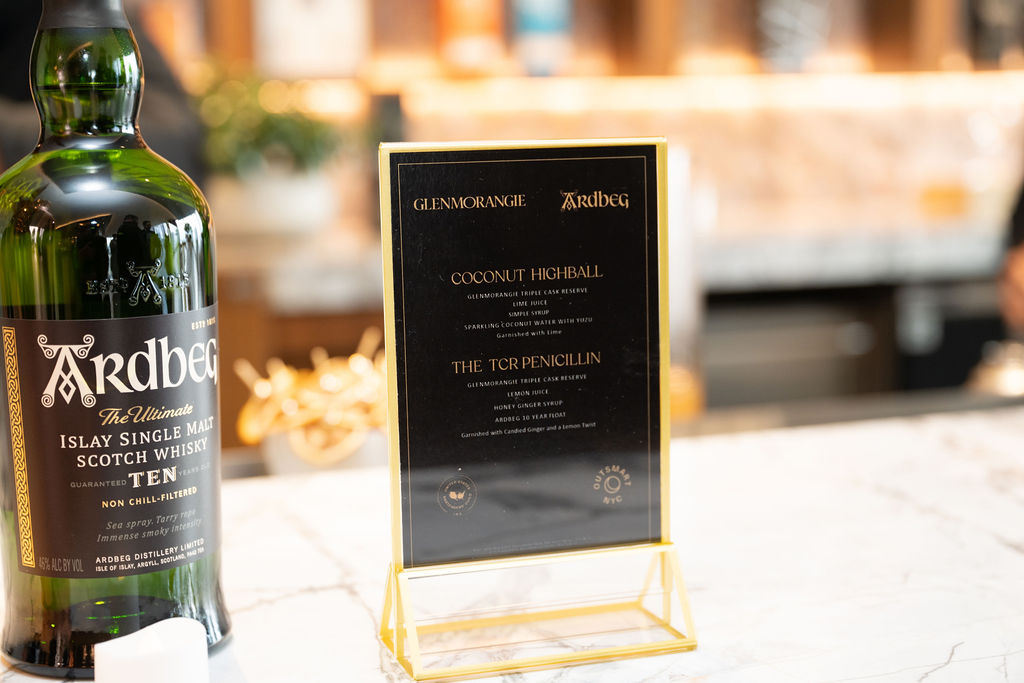
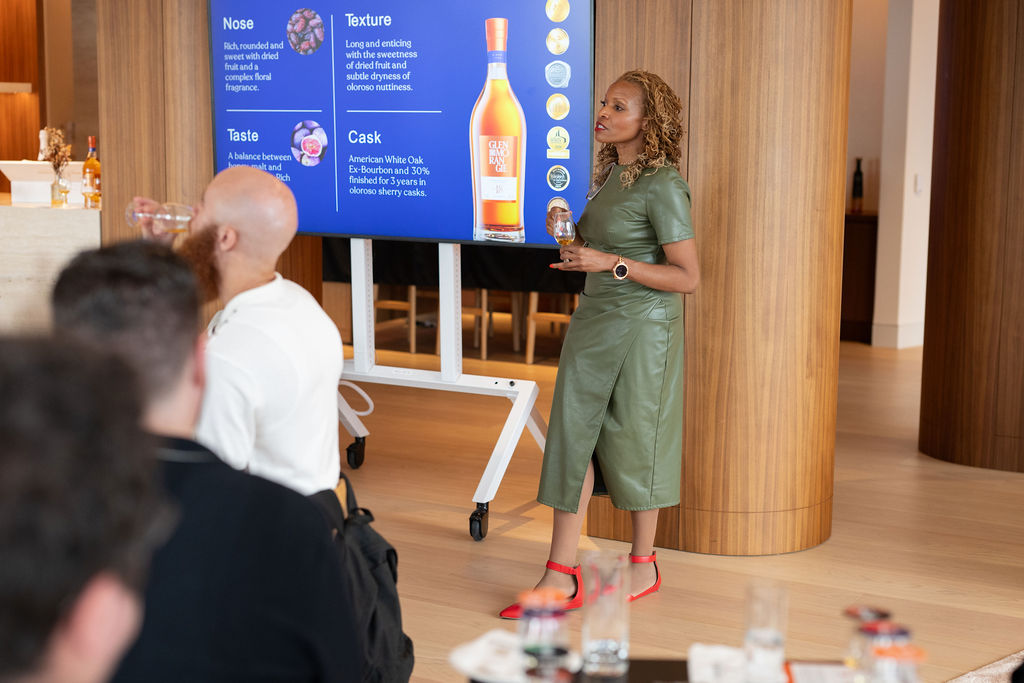
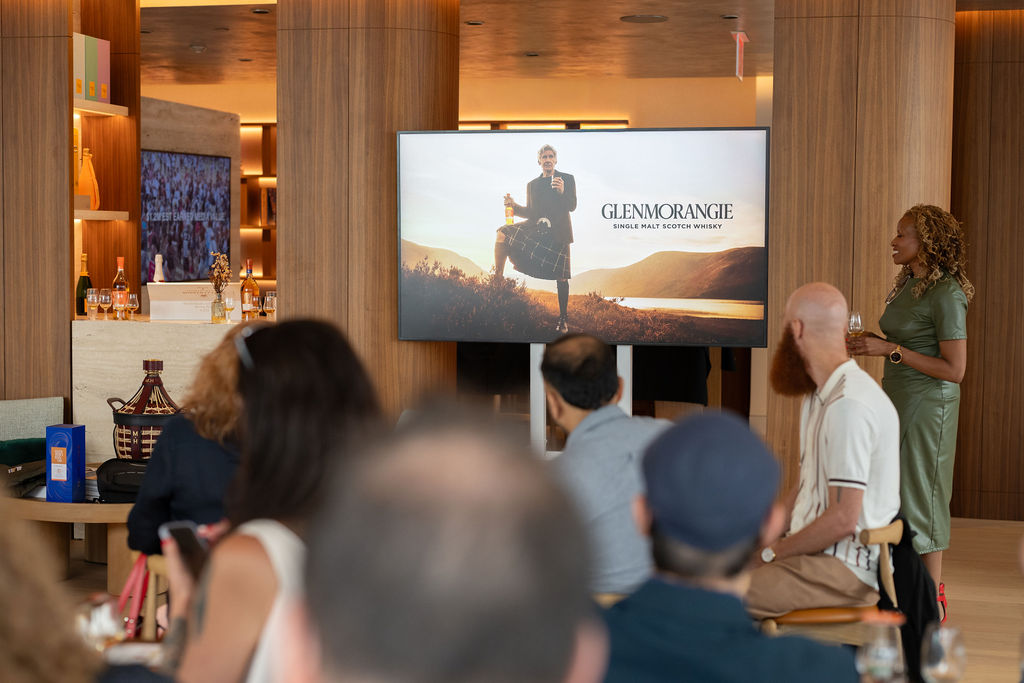
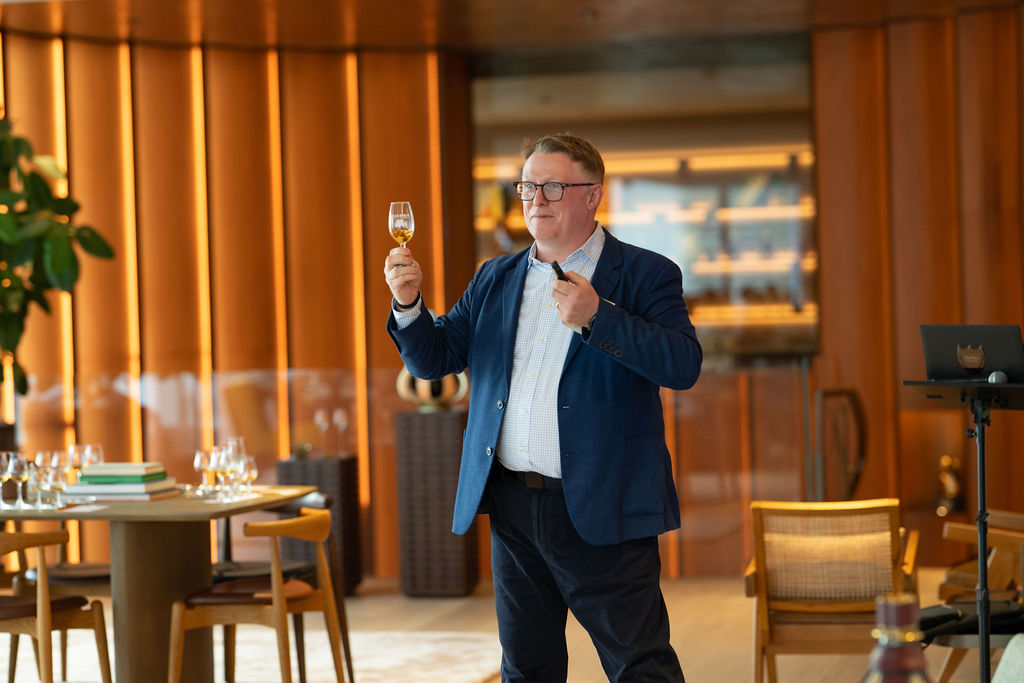
Glenmorangie, the distillery, was founded in 1843, sitting a little off the town of Tain in the Highlands area of Scotland. Glenmorangie, the whisky, is characterized by a typical flavor profile of light, fruity, sweet notes. Glenmorangie is famous for its stills being the tallest in Scotland, which are rumored to be originally designed for gin making, hence the light, fruity flavors of the brand. All of Glenmorangie’s expressions mature in white American oak, before moving on to different finishes. Glenmorangie claims the title, together with Balvenie, of inventing the “finish” – the technology of moving the liquid from one cask to another to create a layered, complex flavor, rather than marrying it. This happened somewhere in the mid-1980’s.
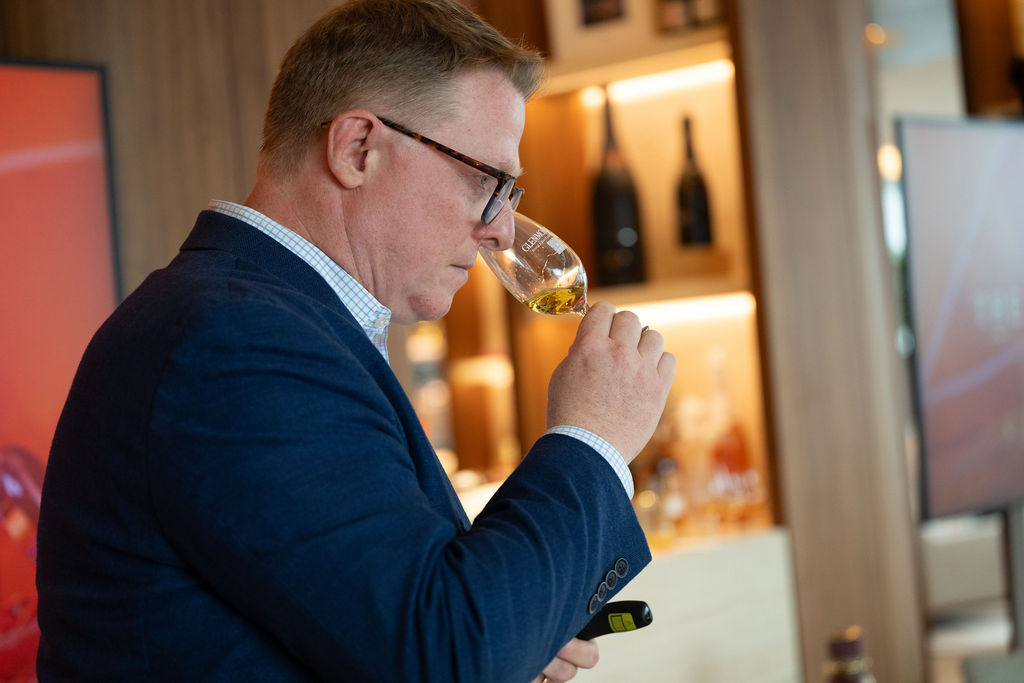
We focused on two basic core expressions: The Glenmorangie 12 and the 18. The Original – 12 started with a 10-year-old and morphed into the 12-year-old, adding two more years on the age statement. As its names infers, it expresses and holds the core distillery profile – it’s your moist morning bun with tons of butter and orange marmalade.
Its older brother, The Glenmorangie 18 – the “Infinita” – is arguably one of the most popular expressions of the Glenmorangie family, with a very clear “Glenmorangiean flavor.” It’s very distinct in its fruity notes, as if you just had a bite of the lightest plum pie with warm vanilla ice cream. This is achieved by aging 15 years in the famous American oak that’s lightly charred and heavily toasted, bringing out much more vanilla and butterscotch flavors, then, 30% of the whisky is aged three additional years in Spanish Oloroso, while the remaining 70% keeps soaking in the sweetness from the American oak. Then, after a total of 18 years, the two are reunited in marriage to create this truly elegant sip.
Ardbeg, which has gone through many ups-and-downs, was bought by The Glenmorangie Company in 1997. It sits on the coast of Islay and produces some of the heaviest, peatiest, smokiest expressions. Ardbeg has built an impressive, tight, loyal following and community. It started its operations in 1798, as the Macdougal Family built its farm there, distilling alcohol from time to time. This proved to be pretty nice and juicy, leading them to legally producing whisky in 1815. It was bought and sold and opened and closed throughout the 1800s and 1900s until it found a home in Dr. Lumsden’s creative hands. We tried both the 10-year-old and the Uigeadail. I remembered well that Master Blender Gilian Macdonald has indicated her most favorite Ardbeg is the 10 – it’s simple and clear, yet powerful in that it shows the Ardbeg character and profile so clearly. The Uigeadail (pronounced Ooo-gi-dal) is named after Loch Uigeadail, the Loch in Islay that supplied the Ardbeg water. It’s a mix of two types of casks, ex-bourbon and ex-Sherry Oloroso, balancing each other’s characters.
The event was a perfect experience of whisky education at its core – simple, pleasurable, collegial, social. It proves one more time that what sells a distillery is its core portfolio: if the base is good, or more accurately, because it’s extremely different on the palate, that’s all we need. Two beautiful bottles I had the pleasure of examining and learning about from Lisa Pope, at the end of the event, were a 1981 and a 1989 Ardbeg Rollercoaster set.
“Those are actually from the time when the distillery was mothballed and were just bought for a very impressive sum”, Pope said.
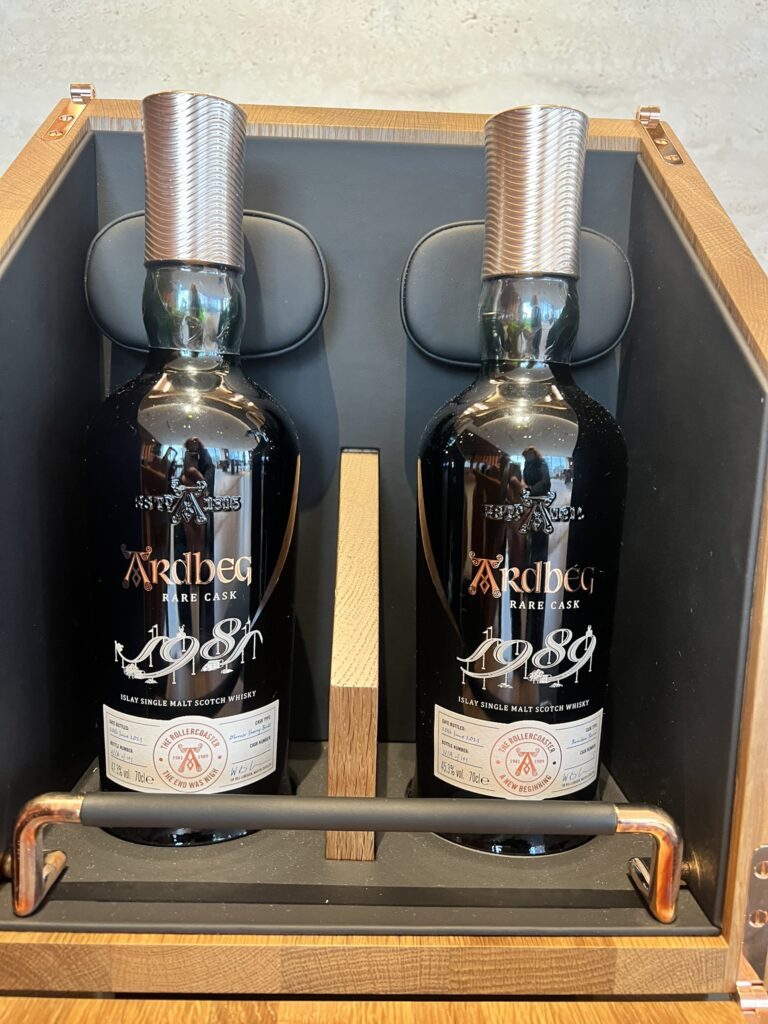
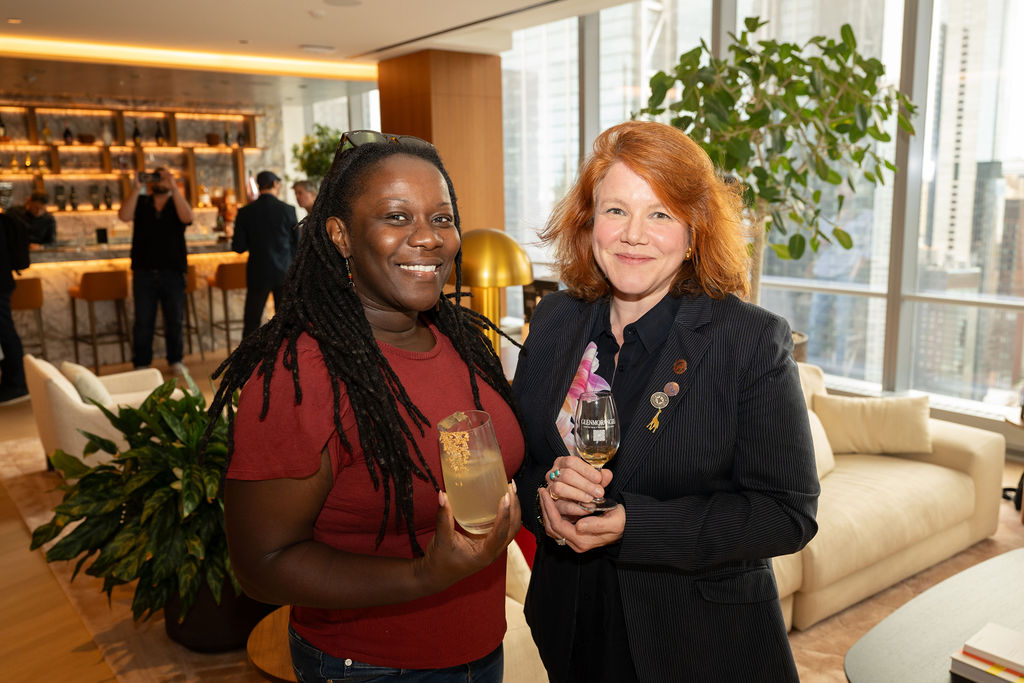
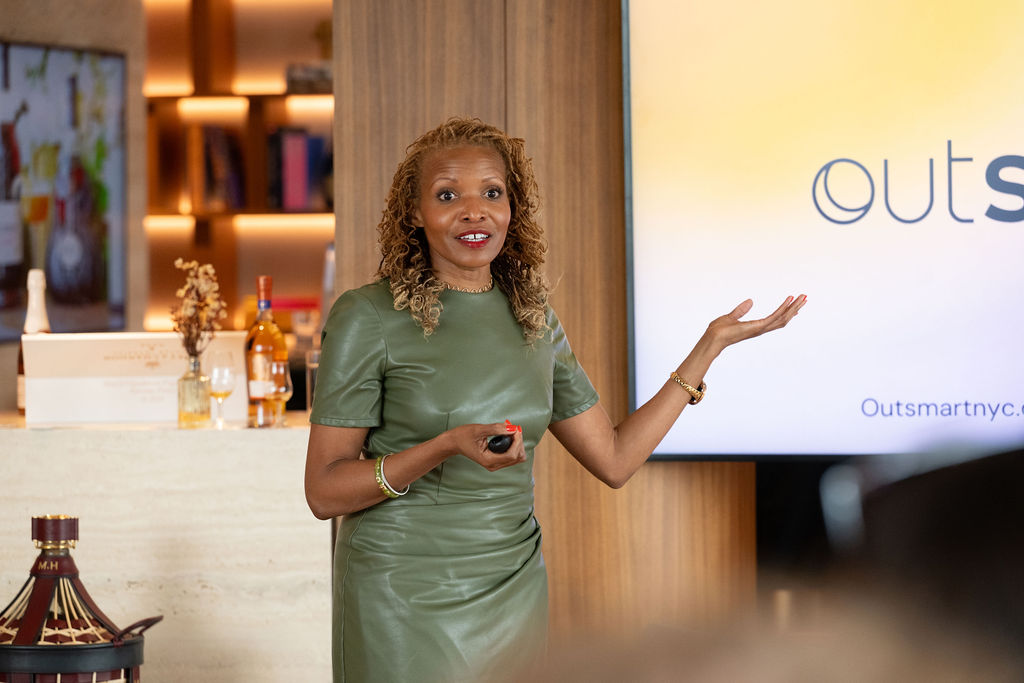
Photo Credit: Toby Tenenbaum


